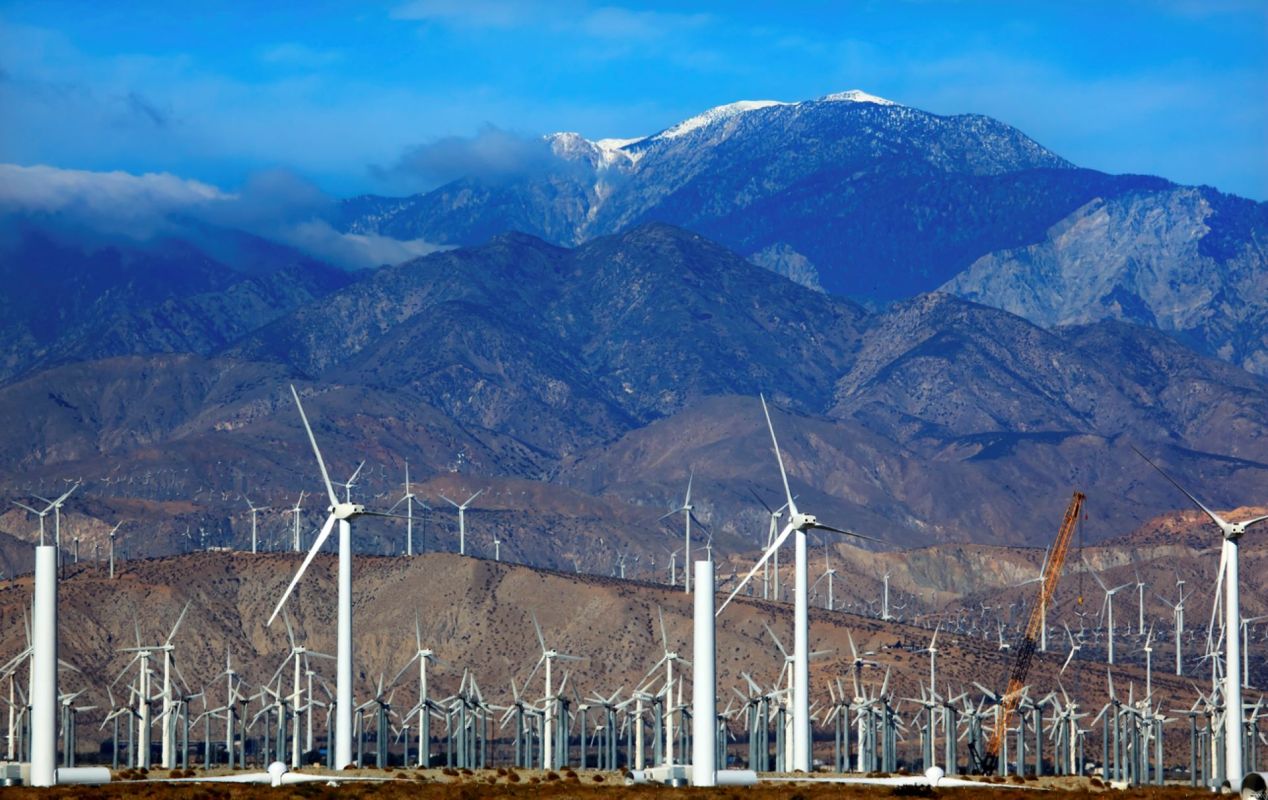The world's top wind-power devices are HAWT.
Horizontal-axis wind turbines, that is. These propeller-on-a-stick-like wind energy collectors dominate wind farms and continue to rule as superior devices for harnessing wind, even as wind tech improves generally and other designs claim advantages in certain areas.
What exactly is a HAWT?
HAWTs are defined by having a blade or blades spin on an axis in line with the wind. Similar to a pinwheel or standing fan in profile, they generally each include a vertical tower and two or three blades that rotate gears to power an electrical generator.
The HAWT design is particularly efficient, cost-effective, and reliable at tackling the problem of converting wind energy into electricity, according to a ScienceDirect post excerpting the book Fundamentals of Smart Grid Systems.
Many HAWTs can run in strong wind and generate high power output. This is partly thanks to the large wind area they draw from, with blades optimized using some of the same aerodynamic principles as airplanes, a video from the U.S. Department of Energy points out.
The HAWT design has additional advantages as an established technology now produced at a greater scale, driving HAWT availability up and costs down. Globally, wind power is on the rise, passing major milestones for its capacity to create electricity and increasing its share of global energy generation as prices drop.
But perhaps the best part of HAWTs? The more energy made by these machines, which can on average power almost 1,000 homes each, the less need for dirty energy sources that pollute the air with planet-overheating gases.
A HAWT history
The basic form of horizontal-axis wind tech has been around since at least the days of Dutch windmills and perhaps back to the first century, when the Greek inventor Heron (aka Hero) used a wind-driven wheel to power a machine, per Renewable Energy World.
Inventor Charles Brush built the first-known HAWT for electricity generation in the U.S. in 1888, reports the University of Michigan, when a windmill-like device gave him the first home with electricity in Cleveland, Ohio.
What's a VAWT?
The main challengers to HAWTs are vertical-axis wind turbines (VAWTs), which have also been explored for many years and come in an intriguing array of designs.
If most HAWTs look like pinwheels, then most VAWTs resemble egg beaters turned upside down — but VAWTs vary widely, and engineers continue to adapt them, as a video from Deutsche Welle Planet A explains.
VAWTs are less common because they don't perform as well, the U.S. Energy Information Administration reports. Indeed, VAWTs are overall less efficient than HAWTs of equal size, notes another ScienceDirect book excerpt. Some vertical designs create a torque that wears on the systems. And VAWTs generally don't reach heights where winds are stronger.
That said, vertical-axis technology has pluses. VAWTs spin with winds from different directions and generally don't need a strong wind to get started. Repairs may be easier with generator parts near the ground. Also, VAWTs may be quieter and easier to locate close to one another because any disruption of wind currents one causes shouldn't negatively affect another nearby.
VAWT supporters point to the potential for small-scale installations, tight urban settings with turbulent wind, or floating turbines at sea.
Yet the big trend in wind turbine innovation is to get bigger, with longer blades and taller towers. And on these fronts, HAWTs are still hot.
"Horizontal turbines have won the sprint to build large-scale wind," says the narrator of the Deutsche Welle video. "Any alternative to big horizontal turbines will have to compete on cost and efficiency."
Join our free newsletter for weekly updates on the coolest innovations improving our lives and saving our planet.









